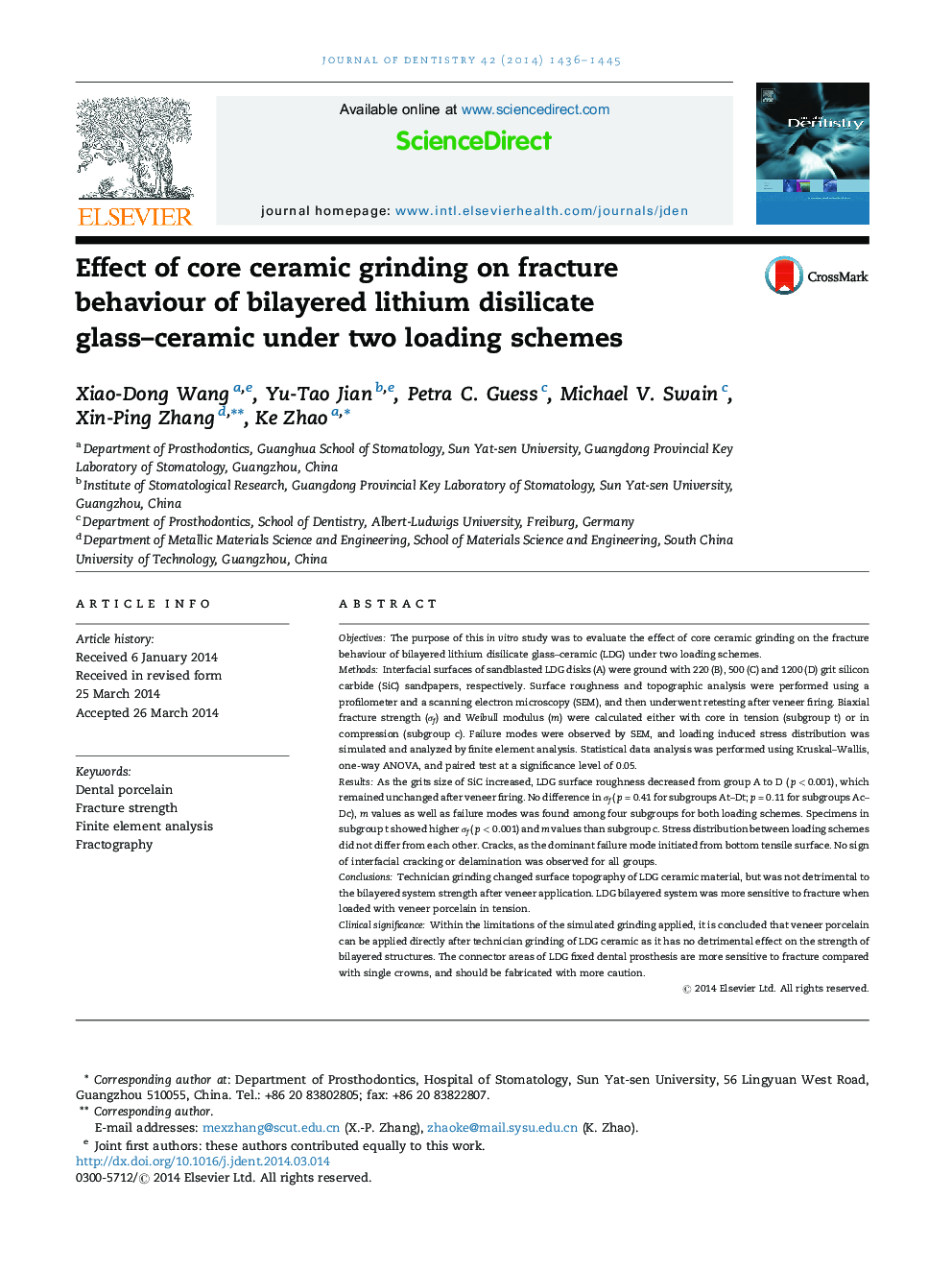| کد مقاله | کد نشریه | سال انتشار | مقاله انگلیسی | نسخه تمام متن |
|---|---|---|---|---|
| 6053529 | 1197053 | 2014 | 10 صفحه PDF | دانلود رایگان |

ObjectivesThe purpose of this in vitro study was to evaluate the effect of core ceramic grinding on the fracture behaviour of bilayered lithium disilicate glass-ceramic (LDG) under two loading schemes.MethodsInterfacial surfaces of sandblasted LDG disks (A) were ground with 220 (B), 500 (C) and 1200 (D) grit silicon carbide (SiC) sandpapers, respectively. Surface roughness and topographic analysis were performed using a profilometer and a scanning electron microscopy (SEM), and then underwent retesting after veneer firing. Biaxial fracture strength (Ïf) and Weibull modulus (m) were calculated either with core in tension (subgroup t) or in compression (subgroup c). Failure modes were observed by SEM, and loading induced stress distribution was simulated and analyzed by finite element analysis. Statistical data analysis was performed using Kruskal-Wallis, one-way ANOVA, and paired test at a significance level of 0.05.ResultsAs the grits size of SiC increased, LDG surface roughness decreased from group A to D (p < 0.001), which remained unchanged after veneer firing. No difference in Ïf (p = 0.41 for subgroups At-Dt; p = 0.11 for subgroups Ac-Dc), m values as well as failure modes was found among four subgroups for both loading schemes. Specimens in subgroup t showed higher Ïf (p < 0.001) and m values than subgroup c. Stress distribution between loading schemes did not differ from each other. Cracks, as the dominant failure mode initiated from bottom tensile surface. No sign of interfacial cracking or delamination was observed for all groups.ConclusionsTechnician grinding changed surface topography of LDG ceramic material, but was not detrimental to the bilayered system strength after veneer application. LDG bilayered system was more sensitive to fracture when loaded with veneer porcelain in tension.Clinical significanceWithin the limitations of the simulated grinding applied, it is concluded that veneer porcelain can be applied directly after technician grinding of LDG ceramic as it has no detrimental effect on the strength of bilayered structures. The connector areas of LDG fixed dental prosthesis are more sensitive to fracture compared with single crowns, and should be fabricated with more caution.
Journal: Journal of Dentistry - Volume 42, Issue 11, November 2014, Pages 1436-1445